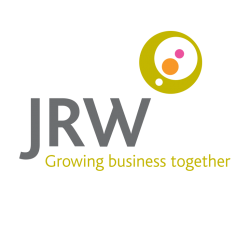THEY GROW UP FAST
By Joanne Gibson BA CA, Associate, JRW Chartered Accountants

Putting savings away for your children’s future definitely won’t impress a young child much now – especially when they realise they can’t access that pot of money till they are 18. But as the old saying goes ‘they grow up fast’ and they most certainly do, one minute you are buying them Lego and My Little Pony and before you know it – its student loans, a deposit on a flat and their first car!
But despite the squeeze on household finances, it seems that families are still finding cash to put by for their children’s future.
Here’s our guide to some of the best options for saving for your child’s future.
There are a number of ways to save or invest for your children – some accounts are tax-efficient but rigid, others are often flexible but liable to tax. Interest earned from child trust funds (CTFs) and Junior ISAs is paid tax-free, but the money is effectively locked in until the child is 18, at which time it belongs to the child. Standard savings accounts usually offer lower interest rates and the interest is likely to be taxable, but there will be flexibility on withdrawals and transfers, enabling the parent to keep a tight rein on the money.
Junior ISAs operate in much the same way as ordinary ‘adult’ ISAs. The maximum investment limit for 2015/16 is £4,080, so there is a real opportunity for parents and grandparents to make tax-free savings investments on behalf of their children/grandchildren. Until April 2015 it was only possible for children who did hold child trust funds (CTFs) to invest in Junior ISAs, which meant that many young savers were trapped in accounts yielding poor interest rates.
From April 2015 all children (under-18s) who are UK resident should be able to hold a Junior ISA and transfers from CTF accounts to Junior ISAs will be allowed. This change is important as it allows parents to look for a better return on their investment, pay lower charges and have more choice of products. Whether a CTF should be transferred to a Junior ISA greatly depends on whether the child currently pays tax, and whether they will save enough to pay tax on their savings when they’re 18. If it is likely that the child will save more than £15,240 (the annual ISA limit from 6 April 2015) in their first 18 years, then it is probably worth considering a Junior ISA, as these convert to full cash ISAs when the child turns 18.
Just like adults, children are also entitled to an annual personal allowance (£10,600 for 2015/16). Although Junior ISAs (and CTFs) are tax-free, unless the child stands to earn interest of more than £10,600 from other types of investment accounts, he or she should not pay tax on the interest earned in any case. Therefore, for those with modest savings, one of the most important considerations when choosing a savings plan should be the interest rate on offer and potential return on the investment.
